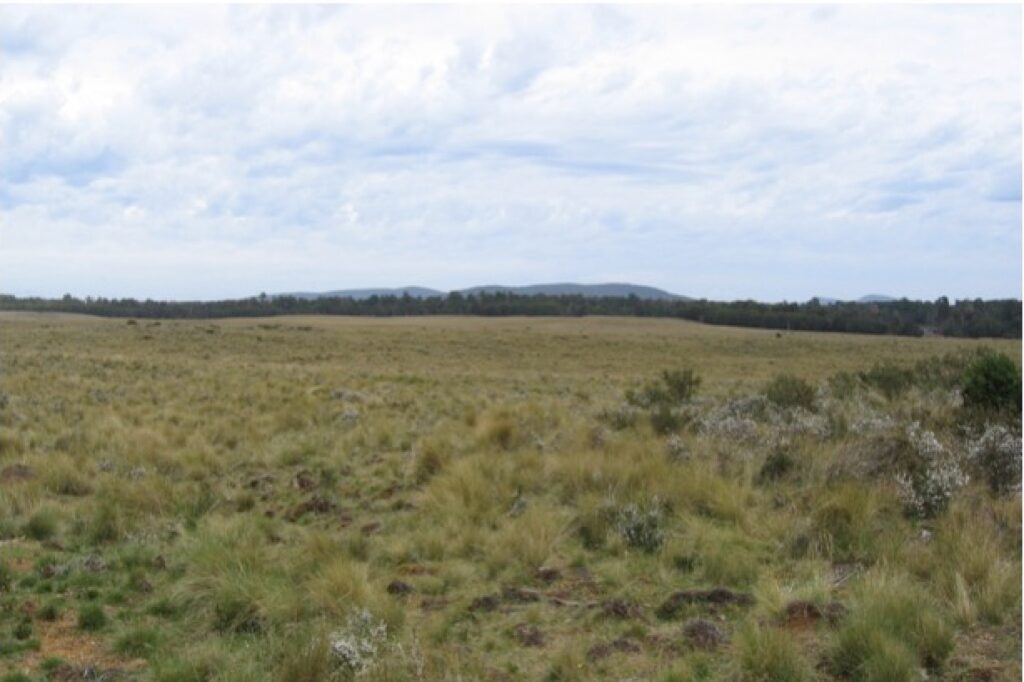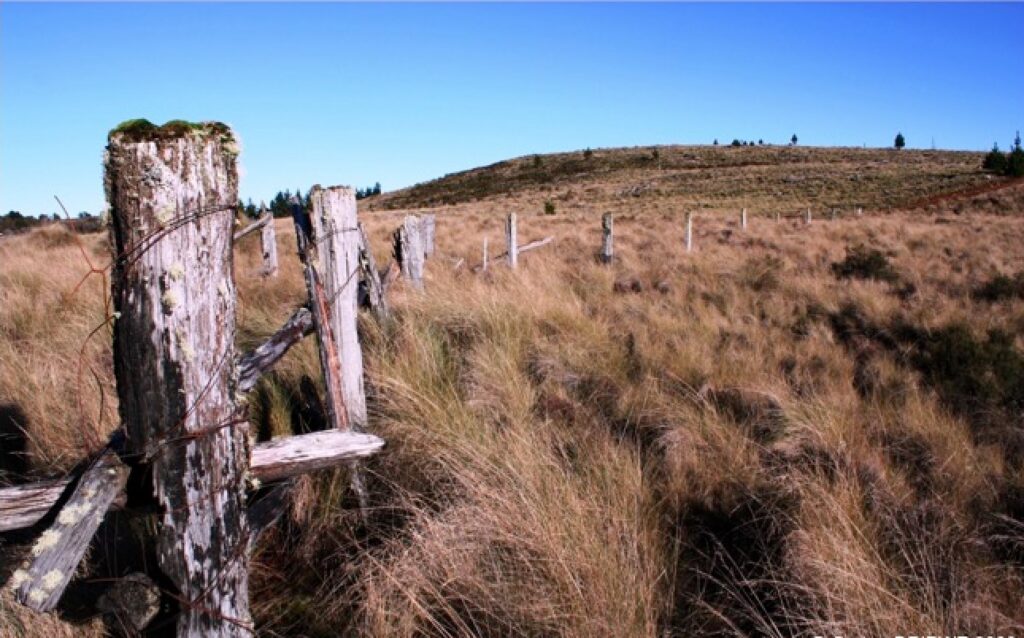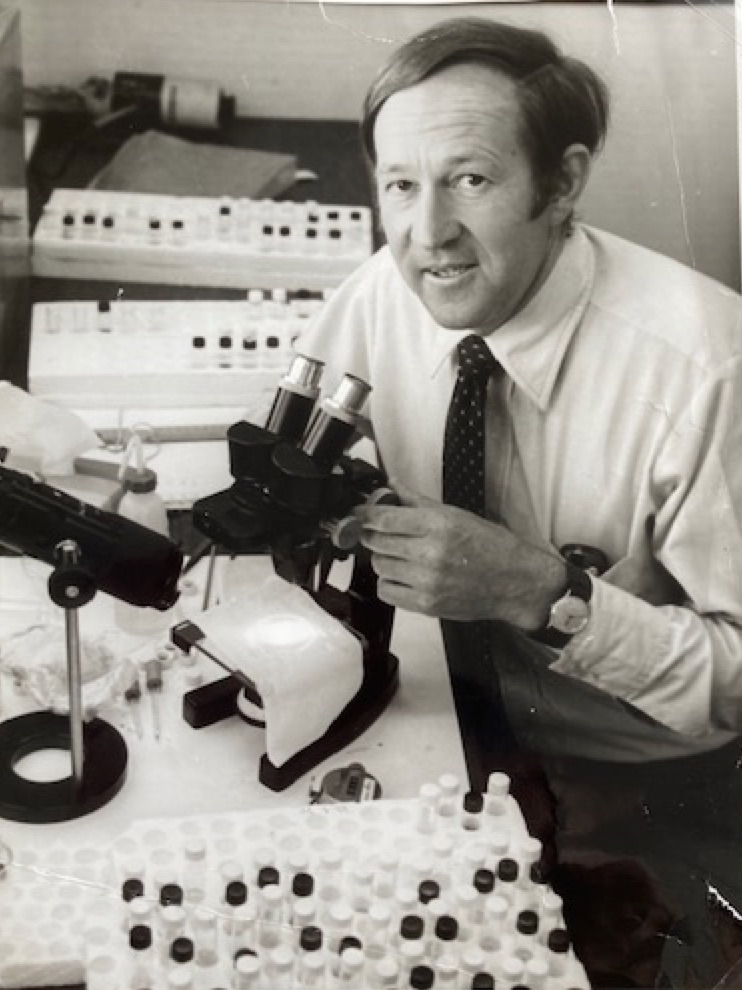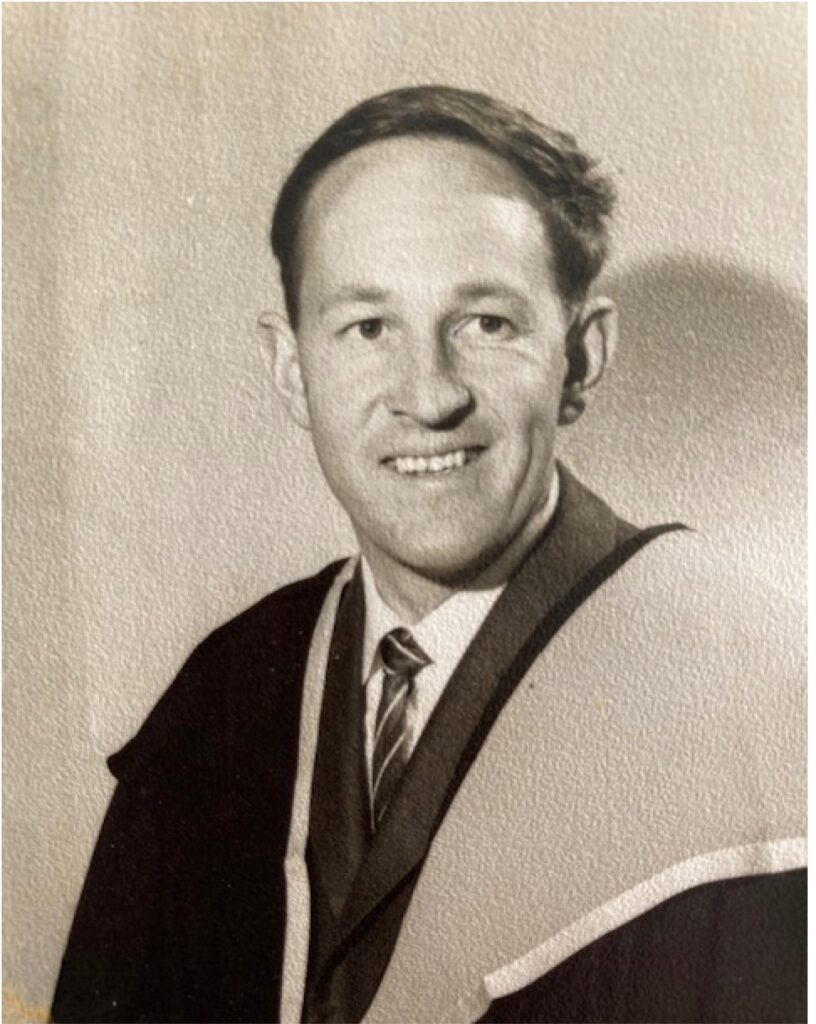Bob Hardy was born and grew up in Burnie. His mother, a Jones, came from a mixed farm at Cuprona, with her Jones line going back to Britton Jones, the ex-convict who built Franklin House. As a twenty-year-old graduate from Hawkesbury Agricultural College, Bob first started working on Surrey Hills in 1960. He was employed as a trainee farm manager, and although he left to do further studies at the end of that year, he still has his work diary. It provides valuable insight into working conditions and precise details about the program of pasture improvement carried out on the native grasslands and buttongrass moorlands to try and enhance the carrying capacity of these areas.
Here is his story about the sod seeding program carried out on Surrey Hills in the autumn of that year.
Chapter 9 of “Fires, Farms and Forests” covered the work carried out by AFH to try and drain some of the buttongrass moorlands and pasture improvement on the white grass plains. Leading agribusiness firm, Goldsbrough Mort and Co,[1] sent one of their agronomists to inspect Surrey Hills, and he recommended a course of action. In 1955 improved pasture plot trials were set up at Guildford, Talbots Marsh and Goderich Plain using ryegrass and various clovers. The trials showed that the clover seed needed to be inoculated,[2] fertiliser added, and autumn sowing fared better than spring. About 600 acres were sod-seeded at Racecourse Plain in 1957, and other areas followed, such as Talbots Marsh, in subsequent years.[3]
Bob Hardy grew up in Burnie and later graduated with a Diploma of Agriculture from the Hawkesbury Agriculture College near Sydney. He managed to secure a job with AFH as a trainee farm manager in early 1960. To learn a bit about the business, he was sent to work with surveyor and engineer David Dickinson and Barry Graham[4] maintaining the Hatfield River channel at Romney Marsh. Bob was immediately struck by the large scale and majestic nature of Surrey Hills. The soil looked like a very good basaltic krasnozem.
Bob and an offsider, Athol Dodds,[5] were given the task of carrying out the sod seeding program on Surrey Hills that autumn. They would get a lift to southern Surrey Hills from truck driver, Tiff Stubbs. On the truck was fertiliser pre-mixed at Hampshire and a caravan was towed behind. The caravan, according to Bob, was a basic, small rectangular accommodation box about 21/2 x 4 metres with just enough room for two single beds, two chairs and a firebox that was used for cooking. No canvas awning on the outside. They were supplied with a ten-gallon drum of water and took their food for the week.[6] Bob says there wasn’t a need to hunt game.[7] No toilet facilities, just 100,000 acres and a spade! They worked in all-weather conditions – rail, hail or shine.
During the week in the field, the only contact was with Tiff as he delivered fertiliser, seeds, spare parts for the seeder, and petrol for the 28 horse-power Ferguson tractor.
In mid-February, they started sod seeding on the native grasslands at Racecourse Plain. After arriving on-site on Monday and setting themselves up, they were keen to get started in the afternoon. The fertiliser mix was three parts superphosphate and one part lime by weight at 4-5 cwt[8] per acre. The seed mix was two pounds white clover, two pounds red clover and four pounds cocksfoot. The clovers were inoculated. They had a rude introduction to kerosene bush (Richea scoparia) which became entangled in the seeder tines and after hitting many basalt floaters they bent the tines. They managed to sow a massive 0.9 acres.
The next day was cold, wet and miserable. After starting at 8 am, they improved their productivity and managed to sow 11.9 acres and 10 acres the following day. By Friday, after a frosty night, the day was clear and relatively warm. They tried unsuccessfully to burn some of the white grass and kerosene bush.
The following week was cold and wet. Sod seeding continued at Racecourse, but ryegrass was introduced to the seed mix. Some Lotus major seed was broadcast hand sown into some of the wetter areas. Burning before sowing was unsuccessful. They started experimenting with disc ploughing before sod seeding to get a reasonable seedbed. The major problem was the rough nature of the plain combined with the lack of power in the Fergusson tractor. They persisted with the pre-seed discing, but it needed three runs to prepare an adequate seedbed.

The following week they had an easterly weather pattern which produced warmer weather and little rain. A quick inspection of the areas they first planted revealed good germination of the clovers and some of the grass seed. They had to sow part of the airstrip which was at the entrance to Racecourse. The airstrip was roughly constructed but was abandoned because it was unsuitable for top dressing aircraft. This area had been levelled in the previous weeks using a grader and looked good, but the exposed basalt was very compacted and hard. With the equipment they had, it was difficult to get a good seedbed. They frequently broke equipment. After three weeks, they had sowed 105 acres.
The fourth week was very frustrating. The weather was persistently cold and wet, and not a lot was achieved. The grader returned to remove much of the white grass clumps that made it challenging to sod seed the airstrip and level some parts. The discs and sod seeder all broke at frequent intervals and needed the repair unit. Also, the fertiliser got wet and would not run through the seeder.
In mid-March, the grader again tackled the strip, and they followed with harrows to try and get a reasonable seedbed. A new seed drill was bought up, and after drilling, the area was rolled. On Thursday, Bob inspected Romney Marsh and burnt quite an area of white grass. On Friday they carted the fertiliser mix to Romney Marsh, and on Saturday, 131/2 acres was sod seeded.
In the last week of March, they were back at the airstrip sod seeding the usual fertiliser and seed mix and broadcasting more Lotus major in the damp areas. A range of seed mixes was used in pegged areas to understand just what suited the area. Game control also started at Racecourse, and Romney Marsh with free feeding of carrots dropped in a furrow.[9] On 1 April, carrots laced in 1080 were laid in those areas.
The rest of April was spent on game control. They spent all of the first week free feeding into a furrow on African Marsh, up the Murrays Plain tracks and the West Wing. The following week poisoned carrots were dropped at Murrays Plains, West Wing and towards Guildford. When feeding at Talbots Marsh, they saw a reasonable clover dominant pasture sown in 1957 and grazed by cattle for the first time. The caravan was moved to a site near Guildford. Mike Pendrigh, the farm manager, visited late that week and the following week.
During the week of 19-22 April, a free feed of carrots was laid between Racecourse Plain and Guildford. They reported that the pasture on the Racecourse was growing well. The following week was their last on Surrey Hills spent free feeding and poisoning. Bob and Athol travelled to and from Surrey Hills by train to Guildford.
In December of that year, Bob returned to Racecourse to assess the growth of the clovers, lotus and grasses sown in the previous autumn. In areas of the airstrip where the topsoil and white grass clumps had been removed, grass and clover survived but was short. Where the removed soil and white grass clumps were left in a rough windrow on the sides, both were well established, tall and vigorous. Beyond the airstrip, it was very disappointing with little clover and essentially no grass evident. Still, where they were growing, the plants were very vigorous, especially the Mt Barker sub clover on the western end of the airstrip. Patches of Lotus major amongst white grass in soaks were robust. It was very poor in button grass areas.

Bob believed that if the soil was prepared well, adequate fertiliser applied, and the clover seeds inoculated, a good pasture could be achieved. Sod seeding into white grass areas with no prior preparation was a failure.
It is arguable whether the sod seeding program was successful for AFH. As I report in my book, the native game was a real hindrance to the establishment of improved pastures. During the 1950s, there was a reduced demand for wallaby and possum skins, which led to an increase in populations, despite poisoning programs, as outlined by Bob. The impetus for a pasture improvement program waned in the 1960s as AFH shifted its focus primarily towards the planting of these areas with eucalypt seedlings, as part of the plantation development.
With a desire to do more study, Bob left AFH at the end of 1960 and headed to Hobart. He completed his matriculation studies at night while working in the CSIRO Soils Division as a lab assistant. He then enrolled in an agriculture degree at the University of Tasmania, but it was not compatible with his Diploma. So, he headed off to Melbourne University to complete his studies. He had a Tasmanian Department of Agriculture Scholarship and went to the Entomology Division, specialising in pasture and field crop pest. Although he spent some time in Burnie, Bob never returned to Surrey Hills.

Bob became Chief Entomologist of the Department in 1976 and in 1980 was in charge of the Fruit and Ornamentals Branch. He was part of the establishment of the cherry industry in Tasmania. In 1992, he retired from the public service to become a private consultant and establish a tourist business based on fruit picking experiences such as strawberries, cherries, apples, and apricots. The company grew on the back of a large cliental from Asia, and it was sold in 2015. Bob stayed on as a consultant until 2019.
[1] Trading as Elders these days.
[2] Pasture legumes, such as clover, form a symbiotic association with specific soil bacteria to meet their nitrogen requirements. When the appropriate rhizobia are not present in high numbers in the soil, they must be introduced by adding them to the seed at sowing. This process is called inoculation.
[3] Bob questions whether Racecourse was sod-seeded as he doesn’t recall seeing any evidence of that work when he was there. In my book on page 143, I wrote that ‘600 acres at Racecourse Plain was sod-seeded in the spring of 1957’. That is a significant area. I looked up my records I relied on for Endnote #792 and found that the 1956/57 Annual Report mentioned a sowing trial plot at Talbots Lagoon. It also mentioned about 20 acres was intensively cultivated and mole drained, some of which was sown with Timothy and Alsike clover. My other reference was a report by Reg Needham dated 15 November 1957. It refers to plot trials at Guildford, Talbots and Goderich Plain in March 1955 using superphosphate, lime and inoculated clover seed. Wet weather delayed further trials the following spring. In autumn 1956 plots were established at Goderich Plain and Thompsons Park. It was too wet for Talbots Marsh. Some grass was sown at Talbots in autumn of 1957. I am not sure why I wrote that 600 acres was sod-seeded at Racecourse Plain as I cannot find any reference to that work. I will have to correct the record if I do a reprint of the book.
[4] See guest blog about Barry’s early years working with AFH https://www.robertonfray.com/2020/10/22/reminiscing-from-the-1950s-to-the-early-1970s/
[5] His father, Reg, was the former owner of Emuvale which AFH bought for their stud stock.
[6] According to Barry Graham, David Dickinson designed the caravans for the employees. Many of the logging and construction crews were housed in caravans while working on Surrey Hills from the 1960s onwards. Barry and David spent quite a bit of time in one of the caravans while they worked in the Loongana area opening up a limestone quarry.
[7] Bob recalls one night after a wombat had died near their caravan. The screams, grunts and barks of the Tasmanian devils fighting over the carcass went on all night and by morning very little was left.
[8] Cwt is an abbreviation for hundredweight. It is an imperial standard unit of weight or mass used in certain commodities. In Britain, a hundredweight is 112 pounds and in North America it is equal to 100 pounds.
[9] The furrow for free feeding was made by a single furrow mouldboard linked to the Ferguson tractor.

Another good one Robert. Keep them coming!
I’m sure the caravans referred to in this story were still in use when I started with AFH in 1985. By then there was no longer the need for employees to camp on Surrey Hills as the road network was very good and the caravans were used by the company’s own planting crews as an on-site sheltered crib room so they could have smoko and lunch out of the weather. I also recall one being permanently based near the entrance to the West Ridgley field nursery as a crib room.
As described above, they certainly were not what most of us would envisage as the caravan a grey nomad would now tow around Australia. They were a simple rectangular box cover with flat galvanised sheeting and mounted on a very solid chassis with wheels more akin to those on a small truck. I suspect they may have been made in-house. To work as crib rooms, the two bunks had been replaced with a bench seat down each side and a small table in the middle.
Regards, Ian
A very interesting story to read. I felt sorry for the working conditions, but he toughened it out. Well done!
Very interesting
I attended Burnie High School with Bob and remember him well. Very interesting to hear how his life panned out. His father was Arch who was the Dairy Officer when we were dairy farming at West Ridgley, until we moved to Shepparton in 1971. He was a great help on many occasions.
Great to read these stories of the early days for AFH. The area was so special to my father Cyril Hills who lived in Guildford in the 30s and trapped in the area in the 40s. Also interesting to hear about the beginning of forestry in the area as my brother, Ross Hills, was so passionate about his career with AFH.
Thanks again Robert, linking many people with the history of AFH. Went to school with Bob and Garry McNab, and worked with Ian and Ross at AFH.